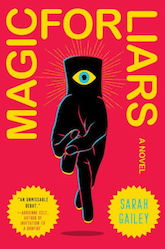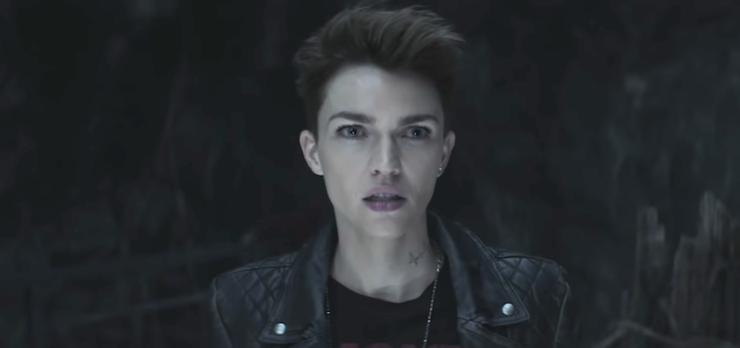The first trailer for the CW’s Batwoman has dropped, and despite a number of complicated feelings everyone is bound to have around superheroes, CW shows in general, and Greg Berlanti’s DC television empire, there was one aspect that really stood out to me:
Kate Kane’s choices around her armor—specifically, her choice to alter it.
In the comics Kate’s signature flowing red hair is part of her Batwoman costume. The purpose of this is disguise; Kate’s hair changes a lot beneath the cowl, but it’s always under the suit and different from her Batwoman wig. It’s a very clever misdirect: The hair is long and distracting and distinctive, making it easy to focus on—but it’s not actually an identifying marker, and it can’t hurt her if someone decides to grab her by the “hair” because it’s not attached to her scalp. It reads as a shrewd choice from a superhero who understands how femininity can play on people’s expectations, and intends to use that expectation to her advantage. After all, how often do women (rightfully) complain about the lack of female superheroes who carry hair elastics and pull their mane back for a fight? Kate Kane clearly gets that, but she’s going to make it work for her instead.
The trailer for CW’s Batwoman is positing something different, however; Kate comes to the cowl by discovering her cousin’s (Bruce Wayne, don’t ya know) lair and Batman armor. Seeing as Bruce isn’t around these days, she requests that it be modified to fit her. We see her go out in the batsuit only to be mistaken for her cousin, mistaken for Batman. Kate isn’t a fan of the error, and realizes that if she wants people to know a woman is behind this particular caped crusader, she’s going to have to change up some visual cues. Next thing we see is Kate in the common Batwoman uniform: The curve of the brightened Bat symbol more clearly outlines the shape of breasts rather than pectoral muscles, she’s got her long wig on, and she’s wearing bright red lipstick. There can be no doubt that this is Batwoman.
Kate Kane’s physical appearance in this show is what many lesbians would term “soft butch”: a woman who emulates certain masculine cues (short hair, male cut clothing, a more boyish vibe in flirting) with a “softer” feminine edge (a bit of makeup, a lack of rigidity around gendered activities) applied. Kate herself is a lesbian who’s in love with a more traditionally femme-presenting woman, from what we see in the trailer. Kate is being played by an actor (Ruby Rose) who identifies as a lesbian and also as genderfluid. And all of these factors are important when realizing that the show’s styling of Batwoman’s suit is far more complicated than Kate’s cavalier comment that she’s “not about to let a man take credit for a woman’s work.”

What we have here is a woman who doesn’t want to present as femme to the world choosing to take on a femme mantle in order to make certain that women are noticed for their societal contributions. It’s a complete reversal of the typical “female empowerment” narrative where a femme woman decides to become more masculine in order to fight (Mulan) or work (Victor Victoria) or learn (Yentl) or anything else that men are permitted to do freely. Kate Kane is not interested in being perceived as a feminine woman day to day, but she’s willing to dress up in that role if it means that people will acknowledge that it’s a woman stepping into Batman’s place. And she does this despite the fact that it doesn’t appear to align with her sense of self.
We could argue for Kate being a little more flexible on butch/femme presentation norms, but a key exchange in the trailer suggests otherwise. When her father says that she’s a “female Bruce Wayne”, she replies with a list of similarities: “awesome, hilarious… handsome.” She could have easily said “hot” or “attractive” or even “gorgeous” since men can certainly be gorgeous—she chose handsome because handsome is how she’d prefer to be thought of, and how she clearly views herself. Yet here she is, donning a costume that to the average onlooker would never read as handsome. She is choosing something pointedly more beautiful to make certain that her femininity is recognized.
Buy the Book


Magic for Liars
On the one hand, it’s practical—just like the comics version of Kate. Adding a layer of gender presentation (in this case, a soft butch stepping into high femme shoes) to the choice behind Kate’s costume makes her an even less-likely suspect to anyone who might pin the alter ego on her. But moving past that, this narrative decision gives us a lot of ideas to unpack about what it means to be female, to be feminine, to be counted for the work you do. While Kate has more than one reason to change her suit this way, the fact that she feels the need to speaks volumes about how rigid our society is around gender and gendered perceptions, and how often women and queer people (and all other disenfranchised identities) must bend to fit around those perceptions.
Suddenly the Batwoman suit isn’t simply a stylistic choice, but a pointed acknowledgement that men are the assumed default in our world. It’s true that this assumption is partly due to the fact that citizens are accustomed to seeing Batman out and about, but if Kate so easily reads as him when she’s wearing a lightly modified batsuit, then that means that a woman could have always been under the cape and cowl and people still likely would have clocked the crimefighter as a man. The assumption runs toward male because that is the gender defaulted to by our society. It is only by making the suit noticeably female, with stereotypically feminine cues—having long hair, drawing attention to curves, wearing makeup—that it will occur to outside viewers that there is a woman under the armor. In this instance, the only way to subvert the default is to mimic the binary thinking that permeates western culture, and assume the opposite position within that binary.
This, by definition, makes the confines of femininity purposefully restricting. (Masculinity is also purposefully restricting, but its defaulted position within society still assumes that masculinity is more important and therefore desirable than femininity—which is why it’s important to center femininity within this conversation.) If you won’t be seen as female without assuming societally enforced cues around femininity, then your own brand of femininity can be easily denied and another kind potentially enforced upon you. But in Kate’s case, we have another layer to add: her personal gender presentation. Kate doesn’t conform entirely to masculine or feminine cues, which means that she’s essentially deciding to adhere to the binary and choose femininity while crimefighting to make certain that women are recognized in that sphere. She’s forced to deny her identity on more than one level while donning the batsuit, first to protect her name with a mask and super persona, second to adhere to a gender presentation that isn’t her own.

This is a struggle that all marginalized groups can attest to every day in their lives. Women in professional situations are often pressured to be “one of the boys” or some perfect version of femininity—one which dons pristine makeup and wardrobe, offers constant emotional availability to others, and makes no mention of a life outside their job. People of color are labelled difficult or disruptive if they refuse to align their behaviors to those of their white colleagues. Disabled people are looked down on for calling attention to their disabilities and asking for more accessible environs. Queer people are expected to “tone down” their own queerness, any aspects of themselves that calls attention to their existence outside gender norms and the binary. Societal expectations exert a tax on our identities every day, making it difficult-to-impossible to simply exist on our own terms.
When you have an intersection of marginalized identities, as Kate Kane does being both a woman and queer, you can be called to “pick a side” in any multitude of situations. The Batwoman suit here is a perfect illustration of that duality—in this moment, Kate decides that her identity as a woman is more important than her identity as a queer person, that it’s more important for people to know that a woman is under the cowl than it is for her batsuited presentation to feel authentic to her specific brand of queer femininity. One can only hope that the show will address this theme in more depth, as it will likely inform how the world interacts with both Kate and the Batwoman persona.
Of course, it’s also entirely possible that the show will ignore this every chance it gets, that it will just be used as a cute narrative button to explain why Kate looks so different when she’s not out roaming the streets for villains after dark. But with Ruby Rose in the part, it will still be an impossible balancing act to ignore. Kate Kane’s journey has always been deeply bound up in her identity, and it’s intriguing—and heartening—to see the CW show make any attempt at all to address the complexities that make Batwoman such a exciting hero.
Emmet Asher-Perrin has a lot of feeling about Batwoman being played by a genderfluid actor. You can bug him on Twitter, and read more of her work here and elsewhere.










